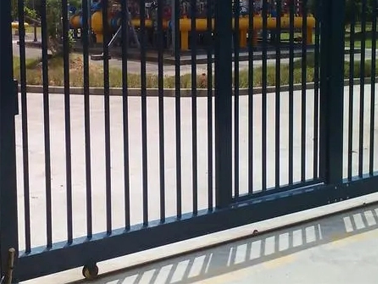- All
- Product Name
- Product Keyword
- Product Model
- Product Summary
- Product Description
- Multi Field Search
Views: 0 Author: Site Editor Publish Time: 2025-06-17 Origin: Site

Sliding doors enhance the modern home with clean lines, easy access, and space-saving design. But when rollers wear out, they can make the door frustratingly sticky, noisy, or unstable. Fortunately, replacing sliding door rollers at home is a doable, affordable DIY job—no need for a professional. With the right tools, a bit of guidance, and quality rollers (for example, from LOETC), you can restore effortless door function.
Sliding doors are popular in homes for patios, closets, room dividers, and more. They free up floor space, add visual appeal, and enhance indoor–outdoor flow. But the smooth sliding action relies on rollers—small components that endure daily wear and tear.
Over time, rollers can become misaligned, worn, or clogged with dirt. Doors develop resistance, gather debris, make grinding noises, or may jump the track altogether. Replacing worn rollers early prevents damage to tracks, maintains safety, and restores ease of use.
Restore Smooth Movement: Fresh rollers reduce friction so your door glides effortlessly.
Reduce Noise: Worn parts clatter or squeak—new rollers operate quietly.
Extend Door Life: Damaged rollers degrade tracks and frames over time.
Ensure Safety: Broken or misaligned rollers risk the door jumping its track.
After 3–5 years of daily use—or earlier if outdoors or pet-accessed.
Whenever you notice difficulty sliding the door.
At the first squeak, scratch, or wobble.
Each time you remove the door for other maintenance.
Tool | Purpose |
Screwdrivers (flat + Phillips) | Removing screws and covers |
Adjustable wrench/socket set | Loosening bolts |
Putty knife/pry bar | Gently loosening stuck rollers |
Tape measure | Matching roller dimensions |
Silicone lubricant | Ensuring smooth glide without sticky residue |
Clean rags/vacuum | Removing debris from track/trough |
Level | Ensuring proper door alignment |
Safety gloves | Preventing hand injuries |
Bonus tools:
Cordless drill (makes screw removal faster) and rubber mallet (for gentle adjustments).
You only need:
Basic knowledge of safely lifting or handling a sliding door (~50 lbs).
Comfort with standard hand tools.
Willingness to follow a step-by-step process and take your time.
A quick test: open the door halfway and let go. If it stops, drags, or falls unevenly, that suggests friction or misaligned rollers.
Audible noises often mean metal-on-metal contact, failing bearings, or grit buildup. These sounds can worsen if rollers aren't addressed.
Doors that wobble side-to-side or bottom rebounds along the track usually indicate uneven roller wear. You may even see visible gaps between the door and frame.
Look for:
Cracked or flattened wheels,
Rusted hardware,
Debris-filled tracks,
Bent or uneven guide surfaces.
Any of these signs means it's time to act before the door breaks or the track is damaged.

Slide the door fully open, checking if it must clear the fixed panel first.
Lift the door upward to disengage bottom rollers, tilting the top outward.
Safely remove the door onto padded flooring—doors can weigh 40–80 lbs.
Lay the door flat on blankets/carpet.
Remove protective plates or bumper blocks to expose the roller assembly.
Spray rusted screws with lubricant and allow it to work.
Unscrew and remove the old rollers—note their orientation and bracket design.
Use the old parts or manufacturer’s specs to match:
Wheel Diameter,
Housing width,
Material type (NY, PU, stainless steel).
LOETC offers high-quality rollers:
Nylon for quiet bedroom closets,
Stainless steel for patio doors,
Sealed bearing rolls for minimal upkeep.
Slip the new roller into the housing, positioning it identically to the old one.
Replace screws tightly—but don’t overtighten.
For adjustable models, set rollers to mid-range height for proper adjustment during reinstallation.
Place the door back into its track and slide it gently to ensure rollers glide correctly.
Lift the door top into the track, then seat the bottom.
Slide the door fully to test glide.
Use the level to check vertical alignment.
Adjust roller height screws until the door slides evenly, doesn’t scrape, and closes flush.
Silicone-based lubes reduce friction without sticky residue. Apply a thin mist to rollers and tracks as part of annual maintenance.
Tracks are roller’s guides. Vacuum and wipe them before re-installing the door—dirt and debris can cause even the best rollers to chatter.
Bent or dented tracks block smooth motion. Straighten them gently with a rubber mallet or replace damaged sections.
Improperly aligned rollers will make the door wobble, stick, or bind—take your time getting everything level.
During replacement, check for loose screws, rusted brackets, or worn seals and plate blocks. Replace them before reinstalling.
Slide the door several times to check for noise or binding before replacing any trim or sill plates.
LOETC ensures consistent roller wheel concentricity, sealed bearings, and shaft tolerances for whisper-quiet operation.
From top-tier nylon to weather resistant stainless steel, LOETC offers rollers perfectly matched to your application—indoors, outdoors, or humid climates.
Fully sealed bearings resist dirt and moisture, preserving roller function for 10,000+ cycles.
Many models include height screws and durable housings—ideal for fine-tuning door alignment over time.
With ISO certification and extensive testing, LOETC ensures each roller exceeds expectations for durability and performance.
Replacing your sliding door rollers is a simple yet rewarding DIY project that enhances smooth operation, reduces noise, and extends the life of your doors. With the right tools, careful steps, and high-quality components—like those from Zhejiang Open Electromechanical Technology Co., Ltd. (LOETC)—you can ensure long-lasting, hassle-free performance. Whether you’re updating indoor sliding doors or tackling outdoor patio systems, LOETC offers a full range of durable, precision-engineered rollers to fit your needs.
For expert advice, product recommendations, or custom solutions, we invite you to contact Zhejiang Open Electromechanical Technology Co., Ltd. today. Visit www.loetc.com to learn more or get in touch with their professional team.